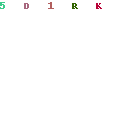Hatha yoga is a particular form of the yoga systems that has become incredibly popular in the West. This particular aspect of yoga stresses the cultivation and retention of energy through various acrobratic and other, sometimes rather bizarre, methods.
The following excerpts from the Hathayogapradipika illustrate the prominence of postures in Hatha yoga, as well as other more practices unfamiliar to the West.
In the indian tradition, Hatha Yoga is one of the four main traditions of Tantra Yoga. Hatha Yoga is first of all concentrating on the practice of postures (asanas) and breath control (pranayama) to energize the subtle channels (nadis). Thus one might say Hatha Yoga concentrates on the third and fourth steps of the eight-fold path of Ashtanga Yoga. The objective of Hatha Yoga is obviously to remove the obstacles to address the further steps of Pratyahara (sense-withdrawal), Dharana (Concentration), Dhyana (Meditation) and Samadhi (Balance). In many Hatha Yoga schools, these further steps are seen as part of Hatha Yoga. What's in a name ?
Excercising postures or Asanas in Hatha Yoga has two essential objectives. The first is that to practice any real meditation, one needs at the least one posture in which one can be perfectly comfortable for a longer period of time. The more such postures one can master, the better the basis for developing the inner meditation techniques. The second objective of excercising asanas in Hatha Yoga is to bring health and energy to body and mind by opening the nadis. When such excercises are regularly perfomed, the path of hatha yoga is opened automatically, though one still has to follow it further. The mere mastering of postures is no objective in itself, though mastering various postures certainly strengthens the power of will and concentration and the habit of not paying too much attention to the information input by the senses. Thus practicing asanas in Hatha Yoga directly opens the path to Prathyahara and Dharana.
The excercise of Pranayama in Hatha Yoga is essential to master ones' breathing patterns. If one can master breath, then the mastery of mind is within reach. Through breathing excercises the flow of prana or vital life force through the body is regulated. That energy is certainly needed on the further steps of Hatha Yoga that ultimately may lead to samadhi. Special breathing techniques, in which the flow of breath though both nostrils is alternated, brings balance to the two hemispheres of the brain. Pranayama in Hatha Yoga also activates the Kundalini Energy.
Hatha Yoga comes in many varieties and traditions, such as Kashmir Yoga, Iyengar Yoga, Ashtanga Vinyasa Yoga, etc..
In traditional schools, often some of the following categories of Hatha Yoga practice are used to optimally respond to the needs and objectives of the Hatha Yoga practicioner :
Shrishti Krama Hatha YogaThis practice stimules growth on all levels in youth : physical, mental, spiritual. It requires a youthful and healthy body. The main objectives are to improve concentration, flexibility and energy flow through the nadis.Siksana Krama Hatha YogaThis Hatha Yoga practice aims at perfection in all asanas and the further development from pranayama excercises into the controll of the bandhas & other main instruments of yoga.Rakshana Krama Hatha YogaThe objective here is to maintain health, which is an ideal practice for the householder yogi. Relaxation is very important in this practice.Adhyatmika Krama Hatha YogaAnother practice particularly suited for householder yogis, but with a more spiritual objective : hatha yoga practices that lead to uncovering and strengthening the connection to the inside.Chikitsa Krama Hatha YogaCikitsa means therapy and this Hatha Yoga practice thus is a healing practice. It is about regaining balance on the physical, emotional and spiritual levels in order te remove dysfunctions.Shakti Krama Hatha YogaThis Hatha Yoga practice aims mostly at developing Shakti, which means power. It is mostly practiced by Sadhus (renunciates).
Combinations of these 6 practices are also possible of course and many yoga schools have developed other practices.
"Place the right ankle nect to the left buttock and left ankle next to the right buttock. This is Gomukhasana, and resembles the face of a cow.
Place one [the right] foot firmly on the other [left] thigh on the [right] thigh on the other [left] foot. This is called Virasana.
Press the anus firmly with the ankles in the opposite directions and sit well poised. This is Kurmasna according to the Yogins.
Assuming the Padmasana, insert the hands between the thighs and knees; planting them firmly on the ground, rise in the air [supported by the hands]. This is Kukkutasana.
Assuming the Kukkutasana posture, wint he arms around the neck and lie on the back like a tortoise. This is called Uttana Kurmasana.
Taking hold of the toes with the hands [keep on arm stretched in front and] draw [the other] up to the ear as if drawing a bow. This is called Dhanurasana.
Place the right foot at the base of the left thigh, and the left foot outside the right knee. Take hold [of the right foot by the left hand the left foot by the right hand] and remain with the body turned around [to the left]. This is the Asana described by Matsyendra."
"The semen that is about to fall into the genital organ of a woman should be drawn up by practice. If already fallen he should draw up his own semen and preserve it.
Thus the knower of Yoga should preserve his semen. He thereby conquers death. When the semen is expended, death ensues; but there is prolonged life for him who preserves it."
"Diet of the following nature should be avoided as unhealthy: food that [having been once cooked has grown cold and] is heated again; which is dry [i.e. devoid of fat] or has an excess of salt or sourness; that is bad, or has too much of vegetables [mixed with it]."







